How Everyday Chemistry Affects Your Cooking
Have you ever wondered why some dishes taste so much better than others? The secret often lies in the fascinating world of chemistry. Cooking is not just about following a recipe; it’s an intricate dance of chemical reactions that can elevate your meals from ordinary to extraordinary. By understanding these chemical principles, you can unlock a treasure trove of flavors and textures, making your culinary adventures more enjoyable and successful.
Every time you sauté vegetables, bake bread, or whip up a sauce, you’re engaging in a series of chemical processes. For instance, when you heat sugar, it caramelizes, creating a rich and complex flavor profile. Similarly, when proteins are cooked, they undergo transformations that enhance their taste and texture. Isn’t it amazing how these scientific principles can completely change the way we experience food?
Moreover, the chemistry of cooking also plays a crucial role in food safety. Understanding how to manage temperatures and pH levels can prevent foodborne illnesses and ensure that your meals are not only delicious but also safe to eat. It’s like being a scientist in your own kitchen, experimenting with different ingredients and techniques to find the perfect balance.
In this article, we will explore various aspects of cooking chemistry, from the science of flavor to the importance of temperature control. We’ll dive deep into the Maillard reaction, emulsification, and how pH levels influence your dishes. By the end, you’ll be equipped with knowledge that will transform your cooking and perhaps even inspire you to experiment with new techniques and flavors. So, are you ready to take your culinary skills to the next level? Let’s get started!
Understanding how chemical reactions create and enhance flavors can transform your cooking. This section delves into the compounds responsible for taste and how to manipulate them for delicious results.
pH levels can significantly affect food texture and flavor. This section examines how acidity and alkalinity influence various cooking processes, from marinating to baking, and tips for achieving the perfect balance.
This complex chemical reaction between amino acids and sugars creates the browning in cooked foods. Explore how the Maillard reaction enhances flavor and texture in meats, bread, and roasted vegetables.
Temperature, time, and moisture levels all play a role in the Maillard reaction. Learn how to optimize these factors to achieve that perfect golden-brown crust on your dishes.
Understanding the pitfalls of the Maillard reaction can prevent underwhelming results. This section highlights common mistakes and how to avoid them for better flavor development in your cooking.
Emulsification is a crucial process in creating stable mixtures of oil and water. Discover how to master emulsions for perfect vinaigrettes, mayonnaise, and sauces, enhancing your culinary repertoire.
Temperature plays a crucial role in cooking chemistry. This section discusses how precise temperature management affects cooking times, texture, and overall food safety for various dishes.
Different cooking methods utilize temperature in unique ways. Explore how techniques like boiling, frying, and baking interact with food chemistry to produce distinct flavors and textures.
Proper temperature control is essential for food safety. This section covers the importance of cooking temperatures in preventing foodborne illnesses and ensuring that your meals are safe to eat.
- What is the Maillard reaction?
The Maillard reaction is a chemical reaction between amino acids and sugars that gives browned foods their distinctive flavor and color.
- How does pH affect cooking?
pH levels can influence the texture and flavor of food, affecting processes like marinating and baking.
- Why is temperature control important in cooking?
Temperature control is crucial for ensuring food is cooked safely and evenly, which affects both taste and safety.
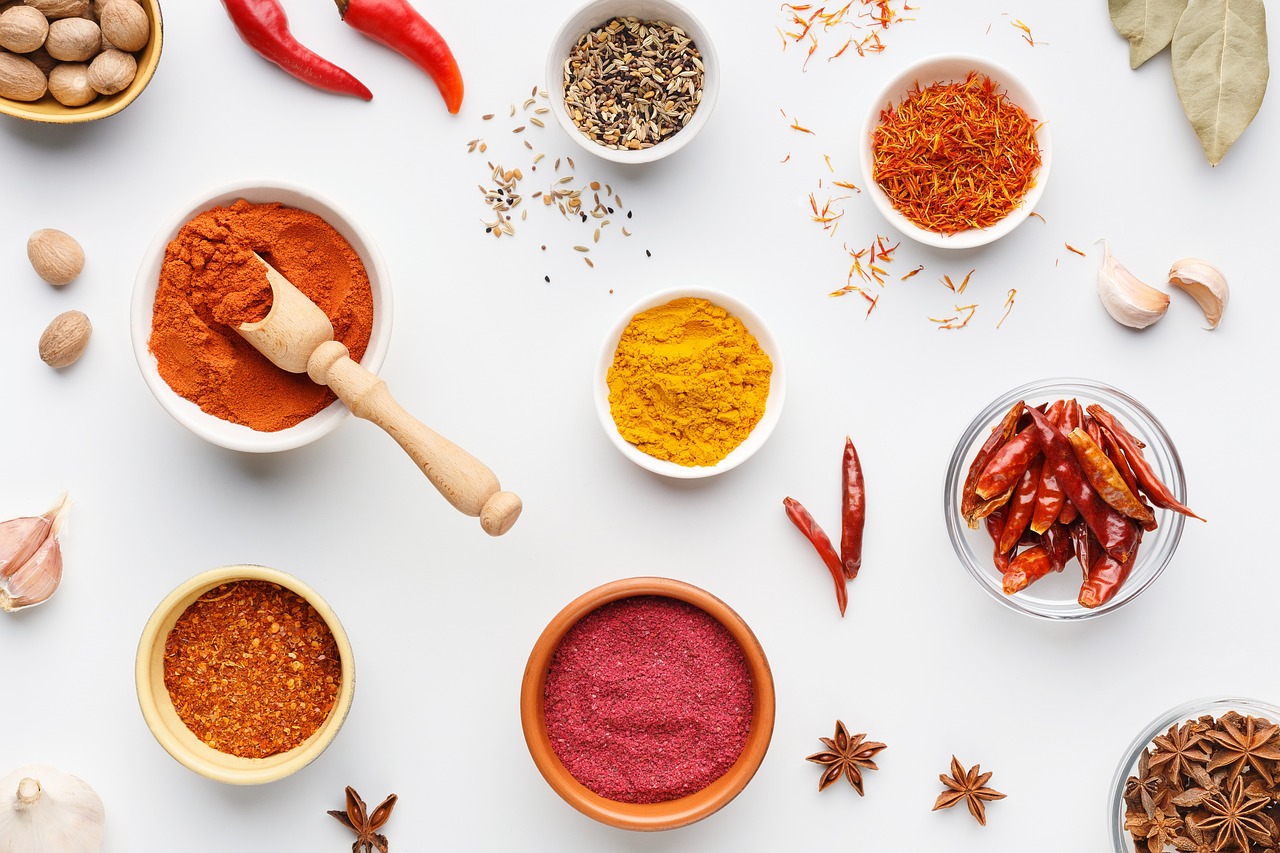
The Science of Flavor
Understanding how chemical reactions create and enhance flavors can truly transform your cooking experience. Imagine walking into your kitchen and being greeted by the tantalizing aroma of a dish simmering on the stove. That delightful scent is not just a coincidence; it’s the result of intricate chemical processes working their magic. When you cook, you’re not just following a recipe; you’re engaging in a scientific experiment that can elevate your culinary creations to new heights.
At the heart of flavor are volatile compounds. These are the substances that evaporate and reach our noses, giving us that mouthwatering anticipation before we even take a bite. For instance, when you sauté garlic in olive oil, the heat causes the garlic to release sulfur compounds, which are responsible for its pungent flavor. This reaction is a prime example of how chemistry can enhance our sensory experiences in the kitchen.
But it doesn’t stop there! The flavor profile of food is also influenced by taste compounds—the basic tastes of sweet, sour, salty, bitter, and umami. Each of these tastes plays a crucial role in how we perceive flavor. For example, adding a dash of salt can enhance sweetness and balance bitterness, creating a more rounded flavor profile. Similarly, acidity from ingredients like lemon juice or vinegar can brighten up a dish, making it more vibrant and appealing.
To manipulate flavors effectively, it’s essential to understand the role of chemical reactions in cooking. Here are some key reactions that you can leverage:
- Caramelization: This is the process where sugars break down under heat, leading to a rich, sweet flavor and a beautiful brown color. Think of the golden crust on a crème brûlée or the sweetness of roasted vegetables.
- Fermentation: This ancient technique not only preserves food but also develops complex flavors. Foods like kimchi and yogurt are prime examples of how fermentation enhances taste.
- Dehydration: Removing moisture from fruits or herbs concentrates their flavors, resulting in richer, more intense tastes. Just think of sun-dried tomatoes!
Moreover, the interaction between different ingredients can lead to unexpected flavor combinations. A classic example is the pairing of chocolate and chili. The heat from the chili complements the rich sweetness of chocolate, creating a complex flavor experience that tantalizes the taste buds. This is where the art of cooking meets the science of flavor, allowing for endless creativity in the kitchen.
Finally, it’s crucial to remember that our perception of flavor is not solely dependent on taste; it also involves smell, texture, and even temperature. The way a dish feels in your mouth and the temperature at which it’s served can significantly influence how we experience flavor. For instance, a cold dish might taste different than the same dish served warm, even if the ingredients are identical. This intricate interplay of sensory experiences is what makes cooking both an art and a science.
In summary, the science of flavor is a fascinating realm that combines chemistry, biology, and even psychology. By understanding the underlying chemical reactions that occur during cooking, you can unlock a world of possibilities in your culinary endeavors. So, the next time you’re in the kitchen, remember: you’re not just cooking; you’re creating a masterpiece through the magic of science!
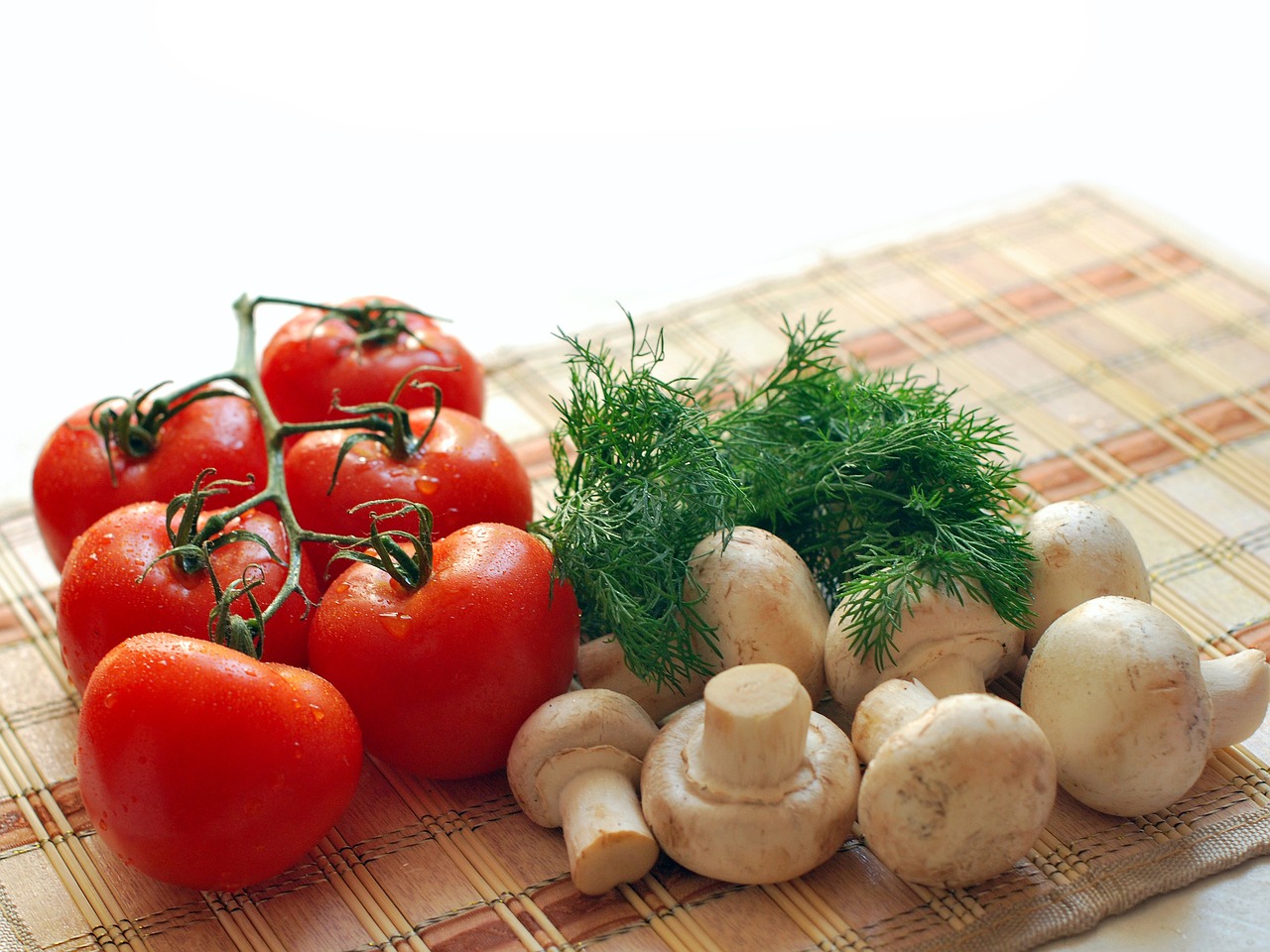
The Role of pH in Cooking
When it comes to cooking, the concept of pH might not be the first thing that springs to mind. However, understanding pH levels can dramatically transform your culinary creations. The pH scale ranges from 0 to 14, with 7 being neutral. Anything below 7 is considered acidic, while anything above is alkaline. This simple yet powerful measurement influences the taste, texture, and even the color of your food. For instance, did you know that the acidity of a marinade can help tenderize meat? That's right! When you marinate meat in an acidic solution, like vinegar or citrus juice, it breaks down protein structures, resulting in a more tender bite.
Moreover, the pH level plays a pivotal role in baking. The balance of acidity and alkalinity can affect how ingredients react with one another. For example, baking soda is an alkaline compound that needs an acid, like buttermilk or yogurt, to create the carbon dioxide bubbles that make your cakes rise. On the flip side, using too much acidity can lead to a denser cake. Striking the right balance is crucial for achieving that perfect fluffy texture.
Here’s a quick reference table to illustrate how different pH levels can affect common cooking processes:
| Food Item | pH Level | Effect on Cooking |
|---|---|---|
| Tomatoes | 4.0 - 4.6 | Adds acidity, enhances flavor in sauces |
| Eggs | 7.6 - 8.0 | Alkalinity helps with whipping and texture |
| Spinach | 5.5 - 6.5 | Acidic flavor can be balanced with fats |
| Beef | 5.5 - 6.5 | Acidity in marinades enhances tenderness |
Another fascinating aspect of pH is its impact on color. For example, when cooking with red cabbage, adding an acidic ingredient like vinegar will turn it a vibrant pink, while an alkaline ingredient can shift its color to a blue hue. This color change is not just a visual treat; it’s a chemical reaction taking place right before your eyes!
So, how can you effectively manage pH levels in your cooking? Here are a few tips:
- Experiment with acids: Use ingredients like lemon juice, vinegar, or yogurt to add brightness and flavor to your dishes.
- Balance your baking: If your recipe calls for baking soda, ensure you include an acidic component to activate it.
- Test your ingredients: Understanding the pH of your ingredients can help you predict how they will interact in your dish.
In conclusion, the role of pH in cooking is nothing short of a culinary game-changer. By understanding and manipulating the acidity and alkalinity of your ingredients, you can enhance flavors, improve textures, and create visually stunning dishes that will impress anyone at your dinner table. So next time you’re in the kitchen, remember: a little chemistry goes a long way!
- What is the ideal pH for cooking?
The ideal pH varies depending on the dish you’re preparing. Generally, a pH of around 6 to 7 is neutral, but some recipes may call for more acidic or alkaline conditions. - How does pH affect food safety?
Maintaining the right pH level can inhibit bacterial growth, making it crucial for food safety, especially in items like pickles or fermented foods. - Can I measure pH at home?
Yes! You can use pH strips or a digital pH meter to measure the acidity of your ingredients.
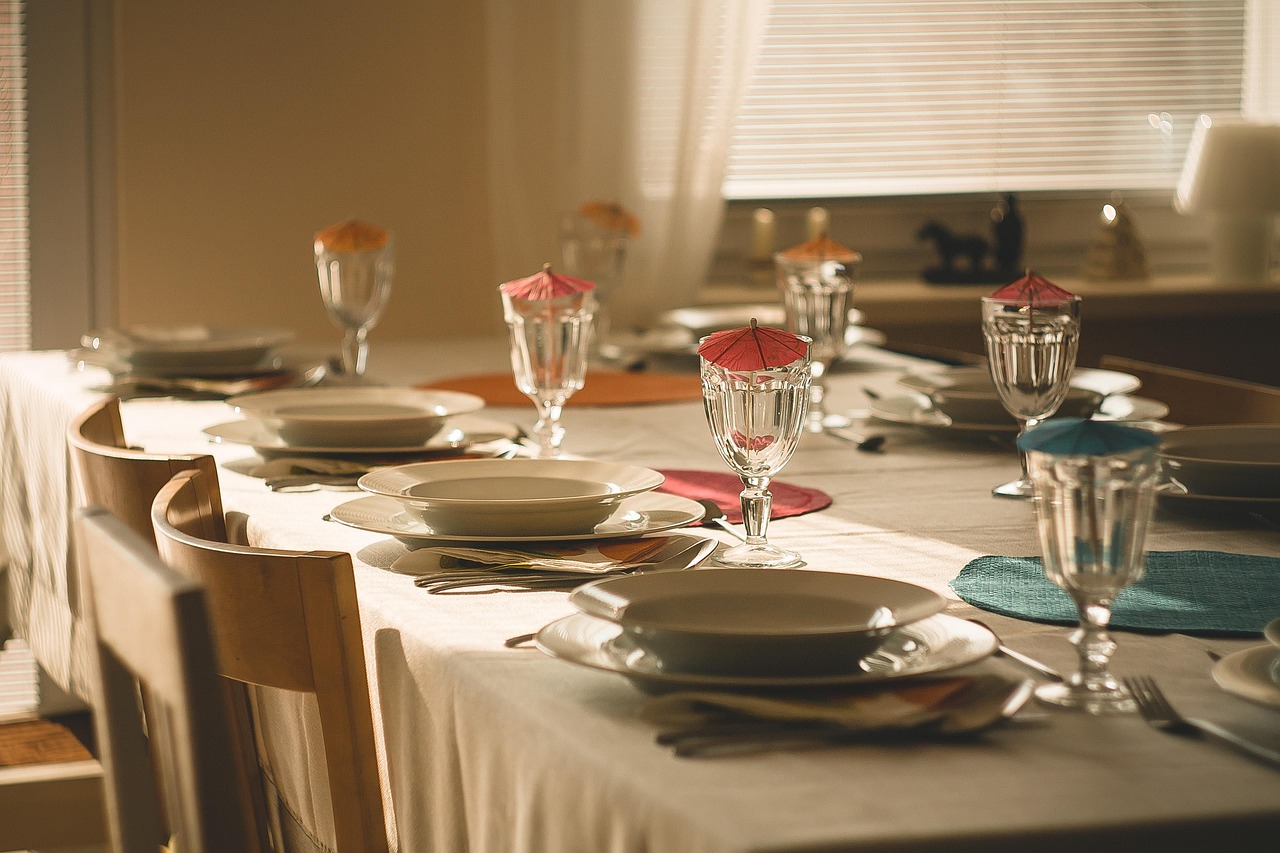
The Maillard Reaction
The Maillard reaction is one of the most captivating processes in cooking, and it’s responsible for that mouthwatering aroma and rich brown color we associate with roasted meats, baked bread, and even toasted marshmallows. But what exactly is happening on a chemical level? This complex reaction occurs when amino acids, the building blocks of proteins, react with sugars under heat. Imagine it as a dance between proteins and sugars, where they twirl and spin, creating a symphony of flavors that tantalize our taste buds.
What’s truly fascinating is that the Maillard reaction doesn’t just enhance the flavor; it also impacts the texture of the food. When you bite into a perfectly seared steak, that crispy, caramelized crust is a direct result of this reaction. It’s like a protective shield, locking in juices and making every bite a delightful experience. So, if you’re wondering why your grilled chicken doesn’t taste quite as good as your favorite restaurant's, it might just be that the Maillard magic is missing!
To fully harness the power of the Maillard reaction, it’s essential to understand the factors that influence it. Here’s a quick breakdown:
- Temperature: Higher temperatures accelerate the reaction. Aim for at least 300°F (150°C) for optimal results.
- Time: The longer the cooking time, the more pronounced the flavors. However, too long can lead to burnt flavors.
- Moisture Levels: Less moisture is better for achieving that golden-brown crust. Excess moisture can steam your food instead of searing it.
Now, you might be thinking, “How can I ensure I’m getting the best Maillard reaction in my cooking?” Here are a few tips to help you achieve that perfect golden-brown finish:
- Preheat your pan or grill before adding food.
- Don’t overcrowd the cooking surface; give your food space to breathe.
- Use dry marinades or seasonings to minimize moisture.
However, it’s not all sunshine and rainbows; there are common pitfalls to avoid. Many home cooks mistakenly believe that cooking on high heat alone will yield the best results. While high heat is crucial, you also need to monitor the cooking time carefully. Burnt food doesn’t just taste bad; it can also produce harmful compounds. So, keep an eye on your dish and adjust the heat as necessary. Remember, cooking is as much an art as it is a science!
In conclusion, the Maillard reaction is a culinary powerhouse that can elevate your dishes from ordinary to extraordinary. By understanding and manipulating the variables involved, you can unlock a world of flavors and textures that will impress your family and friends. So, the next time you’re in the kitchen, think of those amino acids and sugars dancing together, and let the magic of the Maillard reaction transform your cooking!
- What is the Maillard reaction?
The Maillard reaction is a chemical reaction between amino acids and reducing sugars that gives browned foods their distinctive flavor and color.
- Can I achieve the Maillard reaction at lower temperatures?
While it is possible, it generally takes longer and may not produce the same depth of flavor as higher temperatures.
- What foods benefit most from the Maillard reaction?
Meats, bread, and roasted vegetables are some of the best examples where the Maillard reaction enhances flavor and texture.
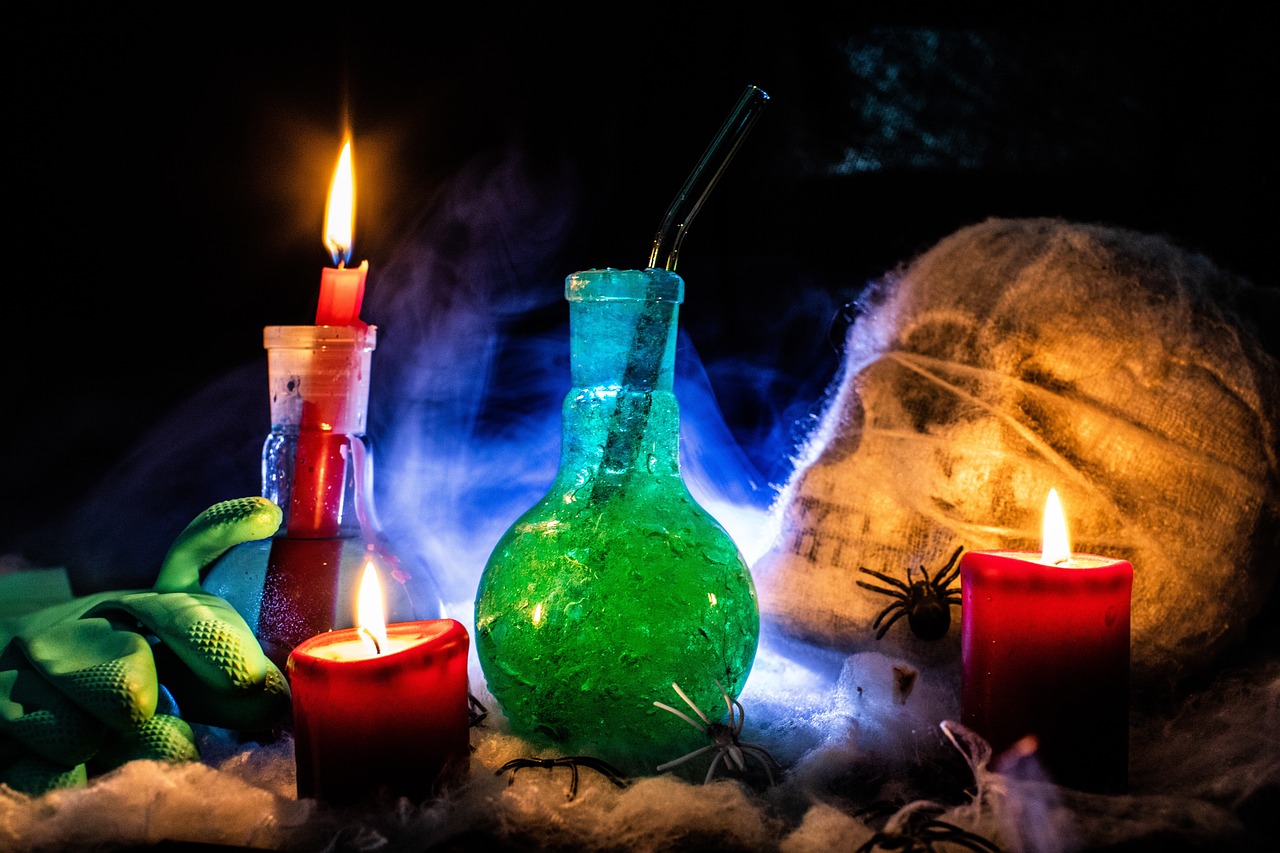
Factors Influencing the Maillard Reaction
The Maillard reaction, that magical process that gives our food its delicious brown crust, is influenced by several key factors. Understanding these elements can help you elevate your cooking game to new heights. First and foremost, temperature plays a crucial role. The Maillard reaction typically occurs at temperatures above 285°F (140°C). At this point, the sugars and amino acids in your food start to react, creating a complex array of flavors and aromas. If the temperature is too low, you might end up with a lackluster dish that doesn’t have that appealing golden-brown color.
Next up is time. The longer you allow the reaction to occur, the more pronounced the flavors will become. However, there's a fine line here; if you leave your food cooking for too long, it can burn, leading to bitter flavors rather than the rich, savory notes you’re aiming for. So, patience is key, but so is vigilance!
Another important factor is moisture. While a little moisture can help facilitate the Maillard reaction, too much can hinder it. This is because water acts as a heat sink, preventing the temperature from rising high enough to trigger the reaction. For example, when searing meat, it’s best to pat it dry first to ensure a proper crust forms. On the flip side, if you're roasting vegetables, a light drizzle of oil can help create a nice balance, allowing for that desirable browning without excess moisture.
To summarize, here are the main factors influencing the Maillard reaction:
- Temperature: Aim for high heat (above 285°F or 140°C).
- Time: Balance is crucial; cook long enough for browning but not so long that you burn your food.
- Moisture: Keep it minimal when searing, but a little can help when roasting.
By mastering these factors, you can unlock the full potential of the Maillard reaction in your cooking, leading to dishes that not only look appealing but also burst with flavor. So, the next time you fire up the stove, keep these elements in mind and watch how they transform your culinary creations!
Q: What is the Maillard reaction?
A: The Maillard reaction is a complex chemical reaction between amino acids and reducing sugars that occurs when food is cooked, resulting in the browning and development of complex flavors.
Q: How can I enhance the Maillard reaction in my cooking?
A: To enhance the Maillard reaction, focus on using high temperatures, ensuring your food is dry before cooking, and being mindful of cooking times to avoid burning.
Q: Does the Maillard reaction occur in all cooking methods?
A: No, the Maillard reaction primarily occurs in dry heat cooking methods such as roasting, grilling, and frying. It is less likely to occur in boiling or steaming.
Q: Can I replicate the Maillard reaction at home?
A: Absolutely! By controlling temperature, managing moisture, and ensuring you use the right cooking techniques, you can replicate the Maillard reaction at home for delicious results.

Common Mistakes to Avoid
When it comes to the Maillard reaction, many home cooks unknowingly make mistakes that can lead to disappointing results. One common pitfall is not preheating your pan adequately. Imagine trying to toast bread in a cold toaster; it just won’t do the trick! If your cooking surface isn't hot enough, the sugars and amino acids won't react as they should, resulting in a lackluster brown crust. Always give your pan a few minutes to heat up before adding your ingredients.
Another frequent error is overcrowding the pan. Think of it like a concert—if too many people are crammed in one space, it becomes chaotic, and no one gets to enjoy the music. Similarly, when you overcrowd your cooking surface, the temperature drops, and instead of searing, you end up steaming your food. This can lead to uneven cooking and prevent that beautiful caramelization from occurring.
Additionally, many cooks underestimate the importance of moisture control. While a little moisture can enhance the Maillard reaction, too much can hinder it. For instance, if you're trying to brown meat, pat it dry with a paper towel before cooking. This simple step can make a world of difference in achieving that coveted golden-brown finish. Remember, moisture is both your friend and foe, so find that sweet spot!
Lastly, don’t be afraid to experiment with seasoning at the right time. Adding salt too early can draw moisture out of your ingredients, which can inhibit browning. Instead, consider seasoning your food towards the end of the cooking process to enhance flavors without sacrificing texture. By avoiding these common mistakes, you'll not only improve your cooking skills but also elevate the overall quality of your dishes.
- What is the Maillard reaction?
The Maillard reaction is a complex chemical reaction between amino acids and sugars that occurs when food is cooked, resulting in the browning and enhanced flavor of foods like meats and baked goods.
- How can I ensure my pan is preheated properly?
To ensure your pan is preheated, allow it to heat on medium-high for a few minutes before adding any ingredients. You can test its readiness by sprinkling a few drops of water; if they sizzle and evaporate quickly, the pan is ready.
- Why is overcrowding a pan a problem?
Overcrowding a pan can lower the temperature, leading to steaming instead of browning. This prevents the Maillard reaction from occurring effectively, resulting in less flavorful and less appealing dishes.
- When is the best time to season my food?
The best time to season depends on the dish. Generally, seasoning towards the end of cooking can enhance flavors without drawing out moisture too early, which can affect texture.
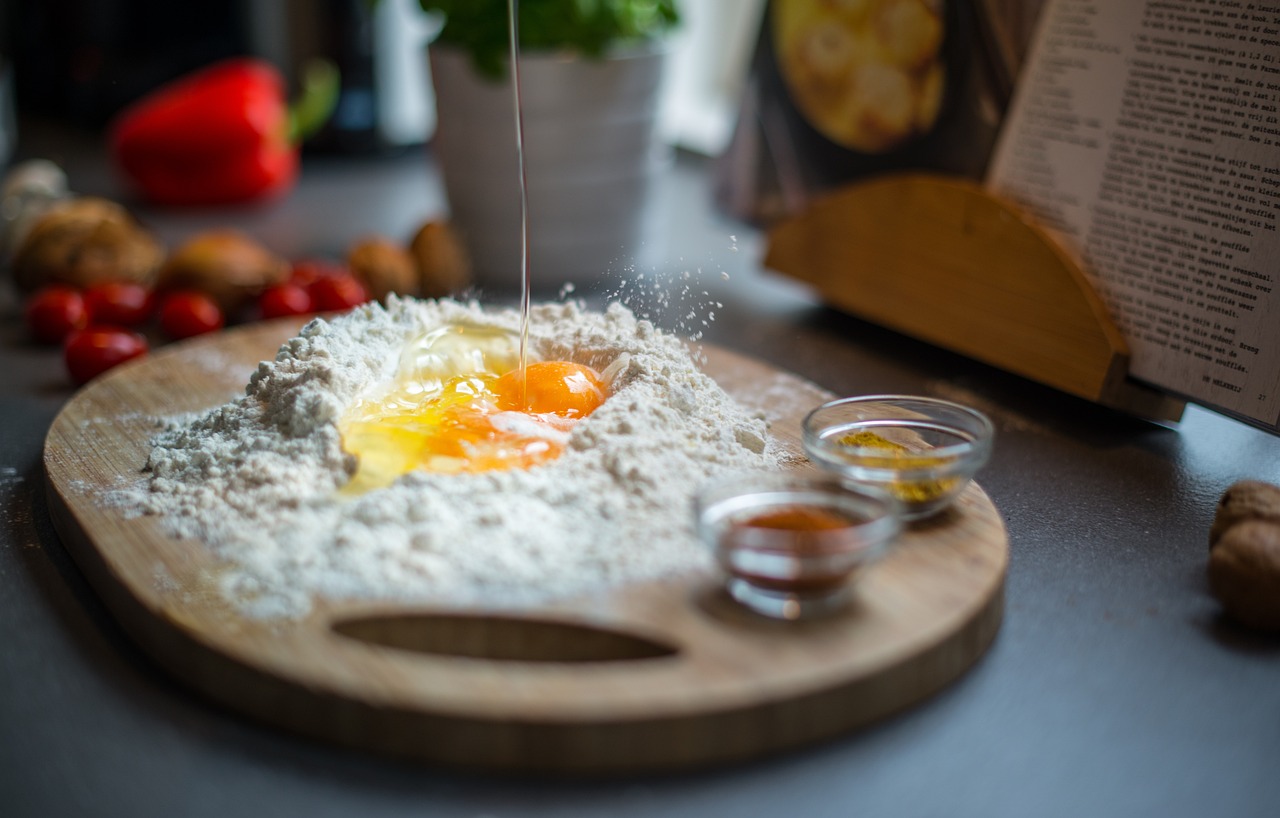
Emulsification in Sauces and Dressings
Emulsification is a fascinating process that transforms two immiscible liquids—like oil and water—into a stable mixture. This culinary magic is essential for creating a variety of sauces and dressings, such as vinaigrettes, mayonnaise, and hollandaise. Have you ever wondered why your homemade dressing separates after a while? That's because emulsification requires a little chemistry and technique to keep those ingredients together. Understanding how to master this process can elevate your cooking game and impress your guests.
At its core, emulsification involves the dispersion of tiny droplets of one liquid into another. Think of it like trying to mix oil and vinegar in a salad dressing; without the right techniques, they will just float apart, leaving you with a messy separation. But when you introduce an emulsifier—like egg yolk, mustard, or honey—you create a bridge between the two liquids, allowing them to blend harmoniously. This is due to the emulsifier's unique molecular structure, which has both hydrophilic (water-attracting) and hydrophobic (water-repelling) properties. This dual nature helps to stabilize the mixture, preventing separation.
Now, let’s dive deeper into the types of emulsions you can create:
- Temporary Emulsions: These are quick mixes, like oil and vinegar salad dressings, which separate easily and require shaking before use.
- Permanent Emulsions: These are more stable, such as mayonnaise, where the emulsifier keeps the mixture intact for longer periods.
- Semi-Permanent Emulsions: These fall in between, often requiring some agitation but holding together better than temporary emulsions.
To achieve a successful emulsion, consider the following tips:
- Temperature Matters: Make sure your ingredients are at similar temperatures. Cold oil and warm vinegar can lead to a broken emulsion.
- Add Slowly: When combining the oil with the vinegar or other liquid, add it slowly while whisking vigorously. This helps to break the oil into smaller droplets.
- Use the Right Tools: A whisk or an immersion blender can help incorporate air and create a stable emulsion more effectively than just shaking in a jar.
To illustrate the emulsification process, here’s a simple recipe for homemade vinaigrette:
| Ingredient | Quantity |
|---|---|
| Olive Oil | 3 tablespoons |
| Balsamic Vinegar | 1 tablespoon |
| Dijon Mustard | 1 teaspoon |
| Salt | To taste |
| Pepper | To taste |
Simply whisk together the vinegar and mustard, then slowly drizzle in the olive oil while whisking continuously. Season with salt and pepper to taste. Voila! You have a delicious vinaigrette that won’t separate easily.
In conclusion, mastering emulsification not only enhances the flavor and texture of your sauces and dressings but also opens up a world of culinary possibilities. Whether you’re whipping up a quick salad dressing or a rich sauce, understanding the science behind emulsification can make all the difference in your cooking. So, next time you’re in the kitchen, remember to embrace the magic of emulsification and let your creativity flow!
Q1: What are the best emulsifiers to use in cooking?
A1: Common emulsifiers include egg yolk, mustard, honey, and various gums. Each has its unique properties and can be used depending on the desired outcome.
Q2: How can I fix a broken emulsion?
A2: To fix a broken emulsion, try adding a teaspoon of warm water or vinegar to the mixture and whisking vigorously. This can help bring the emulsion back together.
Q3: Can I make emulsions without an emulsifier?
A3: While it's challenging, you can create temporary emulsions without an emulsifier by vigorously shaking or blending the ingredients. However, they will separate more quickly.
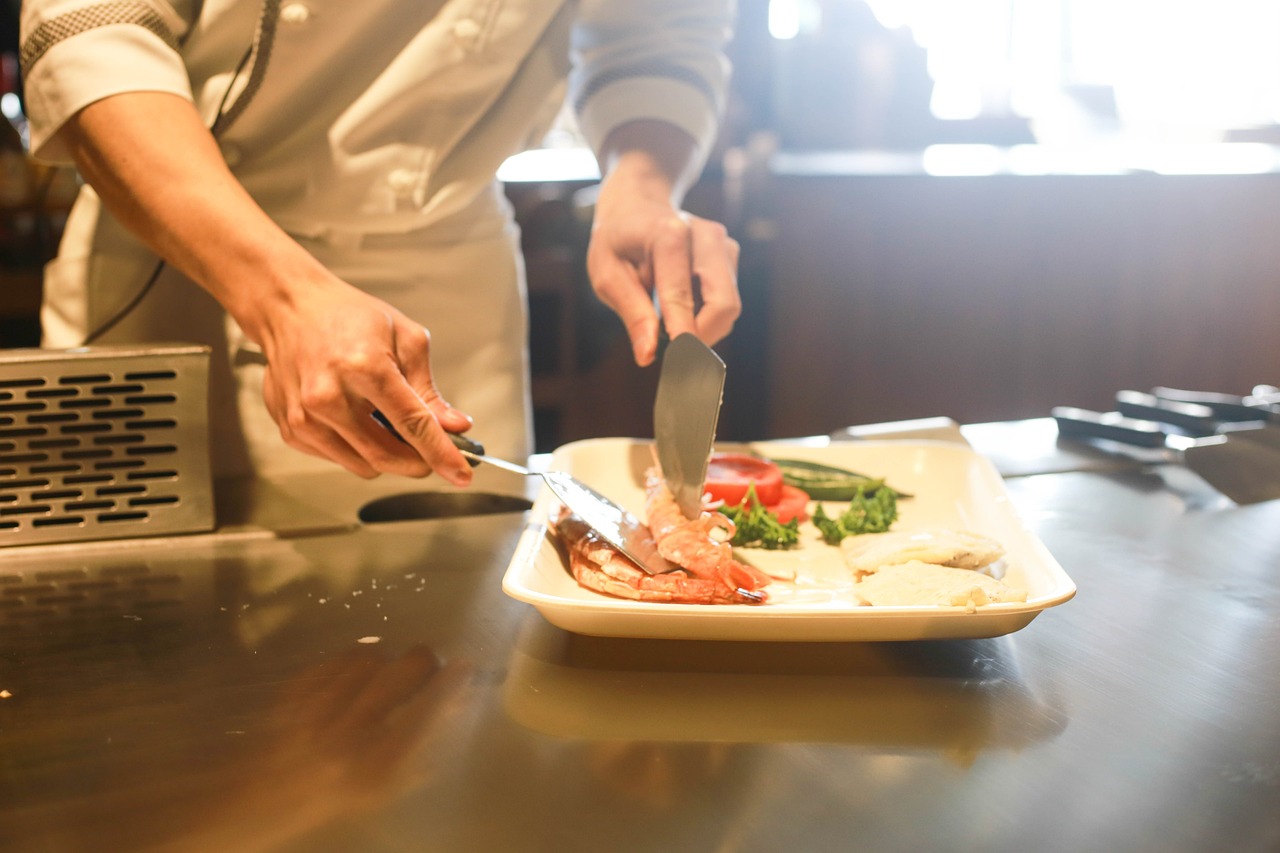
The Importance of Temperature Control
When it comes to cooking, temperature control is like the conductor of an orchestra. Just as a conductor ensures that each musician plays in harmony, maintaining the right temperature while cooking ensures that all the flavors and textures come together beautifully. If you've ever bitten into a piece of chicken that was still pink inside, or a cake that collapsed in the middle, you know just how critical temperature can be. It’s not just about cooking food; it’s about cooking it properly.
Understanding temperature is essential for achieving the desired results in your dishes. Different foods have different ideal cooking temperatures. For instance, meats need to reach a certain internal temperature to be safe to eat, while baked goods rely on precise temperatures to rise properly. A great example is the difference between a perfectly cooked steak and a rubbery piece of overcooked meat. The former is juicy and flavorful, while the latter can be a culinary disaster.
Moreover, the way heat is applied can dramatically affect the final product. Let's break down some common cooking methods and their ideal temperature ranges:
| Cooking Method | Ideal Temperature (°F) | Notes |
|---|---|---|
| Boiling | 212 | Great for pasta and vegetables, but can lead to nutrient loss if overcooked. |
| Frying | 350-375 | Perfect for achieving that crispy texture, but watch for smoke points! |
| Baking | 325-375 | Essential for cakes and breads; too hot can burn the outside before the inside is cooked. |
| Roasting | 375-450 | Ideal for meats and vegetables to achieve caramelization. |
Temperature isn’t just about cooking; it also plays a vital role in food safety. Cooking food to the right temperature can help eliminate harmful bacteria that can cause foodborne illnesses. For example, ground meats should be cooked to an internal temperature of 160°F, while poultry should reach 165°F. Using a food thermometer is a great way to ensure that your food is cooked safely. It’s a simple tool that can make a world of difference in your kitchen.
Additionally, understanding the concept of carryover cooking is crucial. This phenomenon occurs when food continues to cook even after it has been removed from the heat source. For instance, a roast may rise in temperature by several degrees as it rests. This is why many chefs recommend taking meats off the heat a few degrees early to prevent overcooking. It’s like letting a fine wine breathe; it just gets better with a little patience!
In conclusion, mastering temperature control can elevate your cooking from mundane to extraordinary. It’s about precision, safety, and enhancing flavors. So, the next time you step into the kitchen, remember that temperature is your ally. Treat it with respect, and you’ll reap the delicious rewards!
- What is the best way to check if my meat is cooked properly? Using a food thermometer is the most reliable method. Make sure to check the thickest part of the meat for an accurate reading.
- How can I prevent my baked goods from burning? Always preheat your oven and consider using an oven thermometer to ensure accuracy. Also, keep an eye on your items as they bake!
- Why is it important to let meat rest after cooking? Resting allows juices to redistribute throughout the meat, making it juicier and more flavorful.

Understanding Cooking Methods
When it comes to cooking, understanding the various methods can truly elevate your culinary game. Each technique not only affects the final taste and texture of your dish but also plays a significant role in the chemical reactions that occur during the cooking process. Think of cooking methods as the different tools in a toolbox; each one has its unique purpose and can lead to a variety of outcomes. From boiling to frying, baking to grilling, each method interacts with food chemistry in distinct ways, influencing everything from moisture retention to flavor development.
For instance, when you boil vegetables, you're not just cooking them; you're also leaching out some of their nutrients into the water. This is why many chefs recommend steaming instead, as it preserves more of the food's natural flavors and nutrients. On the other hand, frying creates a crispy exterior through a process called Maillard reaction, which we touched on earlier. This method involves cooking food in hot oil, leading to a delightful crunch and rich flavor that can make even the simplest ingredients shine.
Baking is another fascinating method that relies heavily on precise temperature control. The science behind baking is all about how heat interacts with the ingredients. For example, when baking bread, the yeast ferments the sugars and produces carbon dioxide, which helps the dough rise. This is why an accurate oven temperature is crucial; too hot, and the crust may burn before the inside is cooked, too cool, and the bread won’t rise properly.
Grilling, on the other hand, adds a smoky flavor that can’t be replicated by other cooking methods. The direct heat from the grill creates a sear on the outside of the meat, locking in juices and enhancing flavor. However, it’s essential to manage the temperature carefully to avoid charring the outside while leaving the inside undercooked. This balance is key to achieving that perfect grilled steak or vegetable skewer.
Here’s a quick overview of some popular cooking methods and their effects on food:
| Cooking Method | Effects on Food |
|---|---|
| Boiling | Can leach nutrients; softens food |
| Frying | Crispy texture; enhances flavors through Maillard reaction |
| Baking | Involves chemical reactions; creates rise and texture |
| Grilling | Adds smoky flavor; creates a sear that locks in moisture |
Ultimately, mastering these cooking methods allows you to manipulate the chemistry of your ingredients to achieve the desired results. Whether you're looking to create a comforting stew or a gourmet dish, understanding how different cooking techniques interact with food chemistry can open up a world of culinary possibilities. So, the next time you step into the kitchen, remember that you’re not just following a recipe; you’re engaging in a delicious science experiment that can lead to mouthwatering results!
- What is the best cooking method for retaining nutrients? Steaming is often considered the best method for preserving nutrients in vegetables.
- How does temperature affect cooking methods? Temperature impacts cooking times and can influence the texture and flavor of the food.
- Can I combine cooking methods? Absolutely! Many recipes benefit from a combination of methods, such as searing meat before slow cooking.
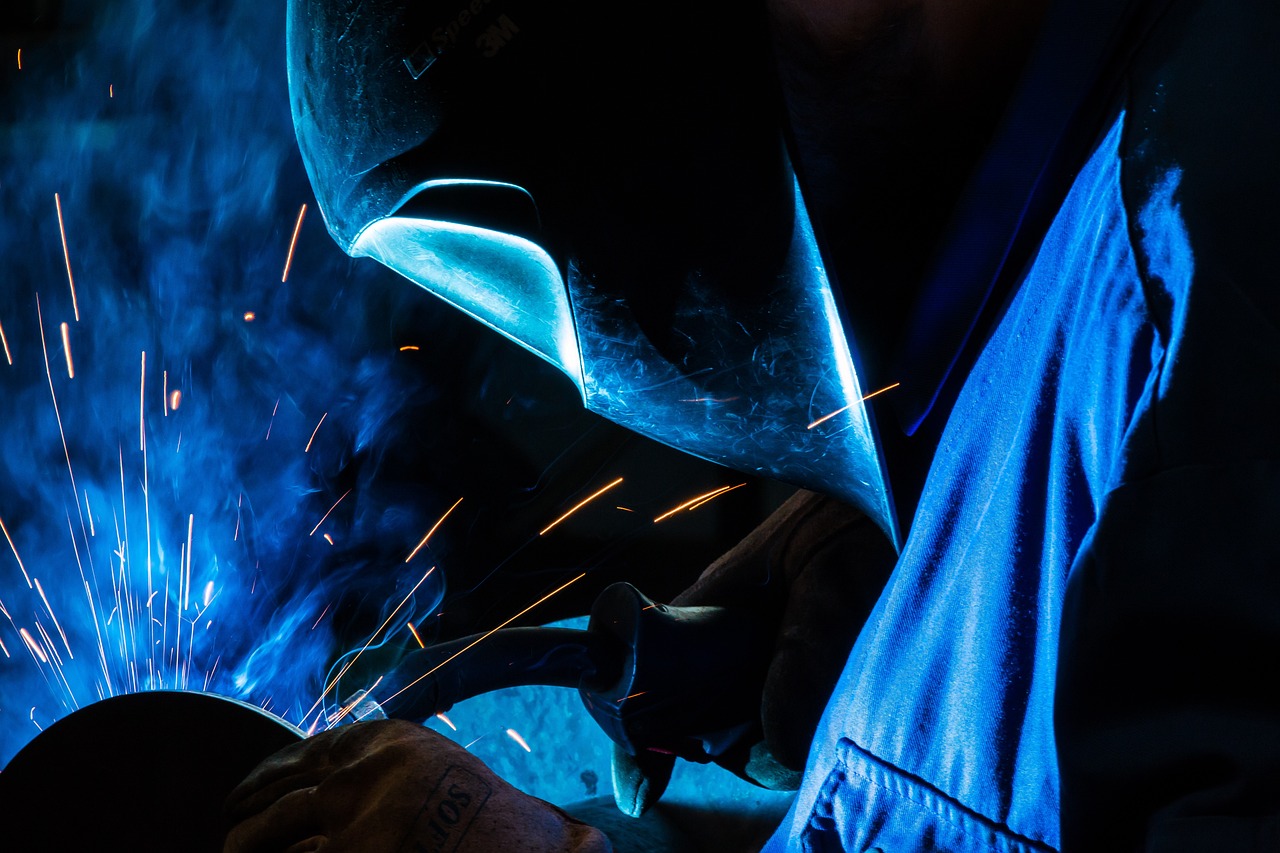
Food Safety and Temperature
When it comes to cooking, maintaining the right temperature is not just about achieving the best flavors; it’s also a crucial aspect of food safety. Foodborne illnesses are a significant concern, and many of them can be traced back to improper cooking temperatures. Did you know that certain bacteria can thrive at temperatures that seem harmless to us? That's right! This is why understanding temperature control is vital for anyone who enjoys cooking.
To keep your meals safe, it's essential to recognize the danger zone—the temperature range in which bacteria can multiply rapidly. This range is typically between 40°F (4°C) and 140°F (60°C). Keeping food within this zone for too long can lead to serious health risks. Here’s a quick breakdown of safe cooking temperatures for various foods:
| Food Item | Safe Minimum Internal Temperature |
|---|---|
| Poultry (chicken, turkey) | 165°F (75°C) |
| Ground meats (beef, pork) | 160°F (71°C) |
| Beef, pork, lamb (steaks, roasts) | 145°F (63°C) with a 3-minute rest time |
| Fish and shellfish | 145°F (63°C) |
| Egg dishes | 160°F (71°C) |
Using a food thermometer is one of the best ways to ensure that your meals are cooked to a safe temperature. It's a simple yet effective tool that can help prevent foodborne illnesses. Just remember, different cooking methods can affect how heat penetrates food, so it’s important to check the temperature at the thickest part of the meat or the center of the dish.
Another factor to consider is the resting time. After cooking, allowing your meat to rest for a few minutes can help the juices redistribute and can also continue to raise the internal temperature slightly. This is particularly important for larger cuts of meat, which may require more time to reach the desired temperature throughout.
Additionally, when reheating leftovers, make sure to bring them to a minimum internal temperature of 165°F (75°C) to kill any bacteria that may have developed during storage. Always store leftovers promptly in the fridge to minimize the time they spend in the danger zone.
In summary, understanding the relationship between food safety and temperature is essential for any home cook. By being aware of safe cooking temperatures, using a food thermometer, and allowing for proper resting times, you can enjoy delicious meals while keeping your family safe from foodborne illnesses. So next time you’re in the kitchen, remember: it’s not just about cooking; it’s about cooking safely!
- What is the danger zone for food safety? The danger zone is between 40°F (4°C) and 140°F (60°C), where bacteria can grow rapidly.
- How can I ensure my food is cooked to a safe temperature? Use a food thermometer to check the internal temperature of your food, ensuring it meets the recommended safe minimum.
- What should I do with leftovers? Store leftovers in the refrigerator promptly and reheat them to a minimum internal temperature of 165°F (75°C).
Frequently Asked Questions
- How does chemistry influence the flavors in my cooking?
Chemistry plays a massive role in the flavors we experience while cooking. Chemical reactions, such as the Maillard reaction, occur when food is heated, creating complex flavors and aromas. By understanding these reactions, you can manipulate ingredients to enhance the taste and overall experience of your meals.
- What is the significance of pH levels in cooking?
The pH level of your ingredients can drastically affect their taste and texture. For instance, acidic ingredients can tenderize meats, while alkaline substances can enhance browning. Knowing how to balance acidity and alkalinity in your dishes can lead to more flavorful and appealing results.
- What is the Maillard reaction, and why is it important?
The Maillard reaction is a chemical reaction between amino acids and sugars that gives browned foods their distinct flavor and color. It's crucial for achieving that perfect golden-brown crust on meats and baked goods. Understanding how to trigger this reaction can elevate your cooking to new heights!
- What factors should I consider to optimize the Maillard reaction?
To get the best results from the Maillard reaction, focus on three key factors: temperature, time, and moisture levels. High heat and sufficient cooking time can enhance browning, while controlling moisture can prevent sogginess. Mastering these elements will lead to deliciously browned dishes.
- What common mistakes should I avoid while cooking?
Some common pitfalls include overcrowding the pan, which can lower the temperature and inhibit browning, and not preheating your cooking surface. Additionally, using too much moisture can prevent the Maillard reaction from occurring, leading to lackluster flavors. Keep these in mind for better results!
- How can I master emulsification in my sauces?
Emulsification involves mixing oil and water-based ingredients to create a stable mixture. To master this technique, start with a base like egg yolks or mustard, and add oil slowly while whisking vigorously. This will help create a smooth and creamy texture for your dressings and sauces.
- Why is temperature control crucial in cooking?
Temperature control is vital for achieving the desired texture and flavor in your dishes. Cooking at the right temperature ensures that food is cooked evenly and safely, reducing the risk of foodborne illnesses. It also helps you achieve the perfect doneness for meats and baked goods.
- What are the different cooking methods and their effects on food chemistry?
Different cooking methods, such as boiling, frying, and baking, interact with food chemistry in unique ways. For example, boiling can extract flavors and nutrients, while frying adds a crispy texture. Understanding these methods can help you choose the best technique for your desired outcome.
- How can I ensure food safety through proper temperature management?
To ensure food safety, it's essential to cook foods to the appropriate internal temperatures. Using a food thermometer can help you check doneness and prevent foodborne illnesses. Remember, different foods have different safe cooking temperatures, so always double-check!



















